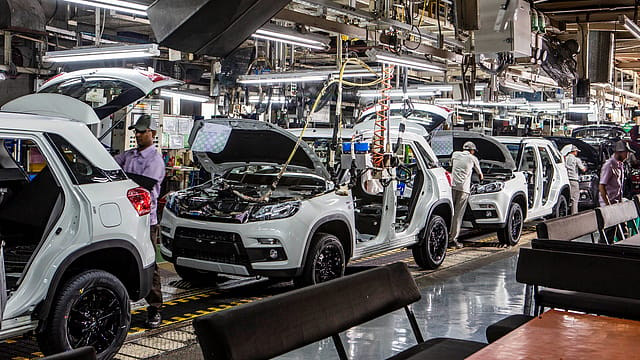Manufacturing PMI slows in Sept but softer upturn in input costs
ADVERTISEMENT

The country's manufacturers recorded the slowest growth in factory orders in September 2022 since June 2022 as the manufacturing PMI slid to 55.1 from 56.2 in August, S&P Global India's data shows. A reading above 50 shows expansion and below 50 indicates contraction in the economic activity.
Despite easing to its weakest levels since June 2022, the rate of growth was sharp on greater demand from domestic and international clients. Posting 55.1 in September, the seasonally adjusted S&P Global India Manufacturing Purchasing Managers’ Index was in expansion territory for the 15th month in a row as factory orders continued to increase at the end of the second fiscal quarter.
"The upturn in input buying was aided by cooling price pressures. Purchasing costs rose at the slowest pace in just under two years, while output charge inflation receded to a seven-month low," says the report.
Pollyanna De Lima, economics associate director at S&P Global Market Intelligence, says the PMI data shows us the Indian manufacturing industry remains in good shape, despite considerable global headwinds and recession fears elsewhere. "There were softer, but substantial, increases in new orders and production in September.”
January 2026
Netflix, which has been in India for a decade, has successfully struck a balance between high-class premium content and pricing that attracts a range of customers. Find out how the U.S. streaming giant evolved in India, plus an exclusive interview with CEO Ted Sarandos. Also read about the Best Investments for 2026, and how rising growth and easing inflation will come in handy for finance minister Nirmala Sitharaman as she prepares Budget 2026.
The indicators also show that output is set to expand further at least in the short term as firms seek to fulfil sales contracts and replenish stocks. During September, businesses benefited from a notable moderation in price pressures, Lima says, adding that input costs rose at the “slowest” rate in almost two years, as suppliers' stocks improved in line with subdued global demand for raw materials and recession risks.
"Subsequently, Indian companies sought to restrict selling price hikes and overall charge inflation eased to a seven-month low," she says.
The overall level of positive sentiment seen in September was the best in over seven-and-a-half years, she adds. "That said, currency risks and the impact of a weaker rupee on inflation and interest rates could derail optimism during October."
Inflation and an uncertain global macroeconomic environment have led to the tightening of policy measures across the world. The RBI last week raised the policy rate by another 50 basis points (bps) to 5.9% as retail inflation remained above the central bank’s threshold of 6% mark for the first eight months of 2022. The central bank also retained the inflation forecast for FY23 at 6.7% amid upside risks to food prices.
The month, meanwhile, also saw an increase in new export orders, which marked a consecutive rise for the sixth month in a row and the fastest since May. Goods producers enjoyed a weaker inflationary environment in September 2022, as input costs rose at the slowest pace since October 2020. While around 8% of companies reported higher purchasing prices, 91% signalled no change.
The retreat in cost inflationary pressures helped curtail the latest upturn in selling prices, which was modest and the slowest in 7 months. The vast majority of survey members (93%) signalled stable average fees. The overall business sentiment improved for the third month in a row in September, reaching its highest level in over seven-and-a-half years.
